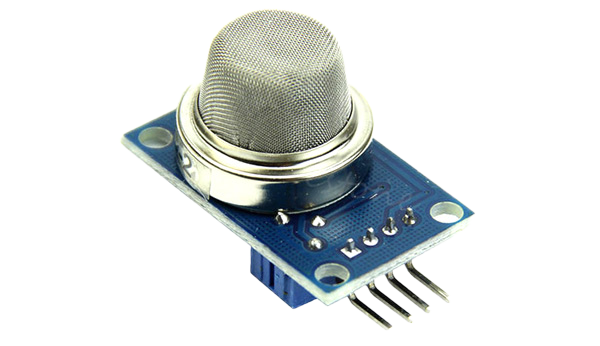

Gas Sensor
Description
Gas sensors are important devices used in IoT projects to detect and measure the concentration of different gases present in the environment. They serve a critical role in ensuring safety, monitoring air quality, and identifying potential hazards. Here is some valuable information about the gas sensors that are frequently used in IoT applications.
Sensor Details
Electrochemical Gas Sensors:
Principle of Operation: Electrochemical gas sensors use electrodes immersed in an electrolyte to facilitate chemical reactions with target gases. These reactions generate an electrical current, which is proportional to the gas concentration.
Features: Electrochemical sensors are highly sensitive and selective to specific gases. They offer excellent accuracy, low power consumption, and fast response times.
Applications: Electrochemical gas sensors are commonly used for detecting gases such as carbon monoxide (CO), nitrogen dioxide (NO2), hydrogen sulfide (H2S), and oxygen (O2).
Semiconductor Gas Sensors:
Principle of Operation: Semiconductor gas sensors employ a sensing element made of a semiconductor material that changes its electrical conductivity when exposed to target gases. The resistance change is measured to determine gas concentration.
Features: Semiconductor sensors are affordable, compact, and offer low power consumption. They can detect a wide range of gases and are suitable for indoor air quality monitoring and industrial applications.
Applications: Semiconductor gas sensors are used for detecting gases like carbon dioxide (CO2), volatile organic compounds (VOCs), methane (CH4), and various other toxic gases.
Photoionization Detectors (PID):
Principle of Operation: PID sensors utilize ultraviolet (UV) light to ionize gas molecules, creating positively charged ions. The resulting ion current is measured to determine gas concentration.
Features: PID sensors are highly sensitive and capable of detecting low concentrations of volatile organic compounds. They are commonly used for industrial safety, environmental monitoring, and detecting hazardous chemicals.
Applications: PID sensors are valuable for monitoring VOCs in indoor and outdoor environments, as well as for detecting gases in industrial settings.
Infrared (IR) Gas Sensors:
Principle of Operation: IR gas sensors measure the absorption of specific infrared wavelengths by target gases. The sensor detects the attenuation of infrared light, allowing the determination of gas concentration.
Features: IR sensors provide high accuracy, reliability, and selectivity for specific gases. They are commonly used in industrial applications and for detecting hydrocarbons and greenhouse gases.
Applications: IR gas sensors are utilized for monitoring gases like carbon dioxide (CO2), carbon monoxide (CO), methane (CH4), and various hydrocarbons. They are used in HVAC systems, emission monitoring, and environmental applications.
Wiring Details
- Connect the VCC pin of the MQ2 sensor to the 5V pin on the Arduino.
- Connect the GND pin of the MQ2 sensor to the GND pin on the Arduino.
- Connect the AOUT pin of the MQ2 sensor to an analog input pin on the Arduino (e.g., A0).
- Connect the DOUT pin of the MQ2 sensor to a digital input pin on the Arduino (e.g., D8).
Circuit Image

Circuit Code
int sensorPin=A0;
int sensorData;
void setup()
{
Serial.begin(9600);
pinMode(sensorPin,INPUT);
}
void loop()
{
sensorData = analogRead(sensorPin);
Serial.print("Sensor Data:");
delay(100);
}